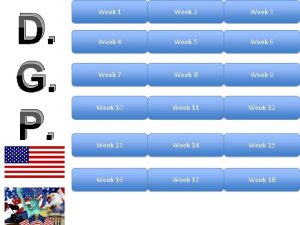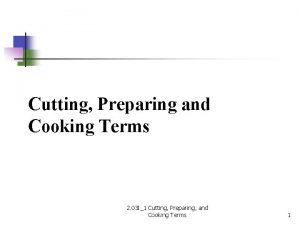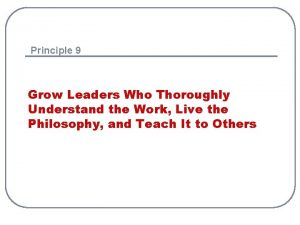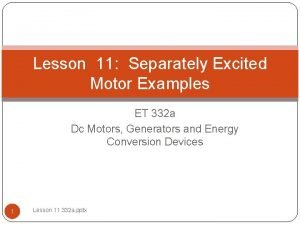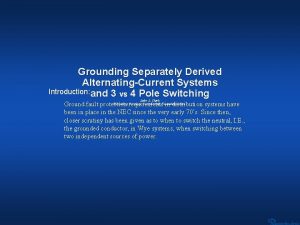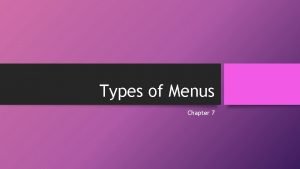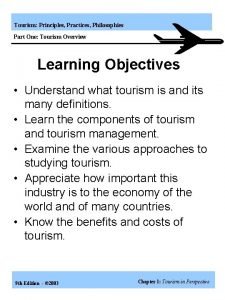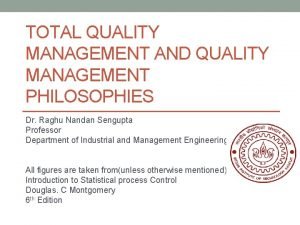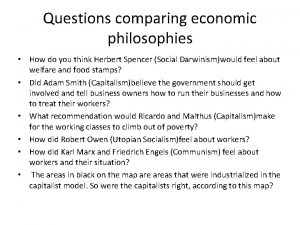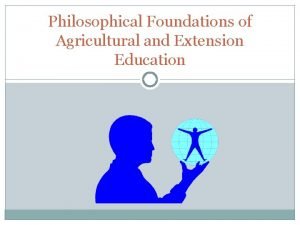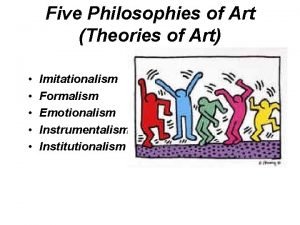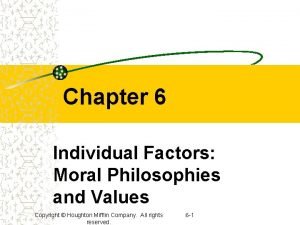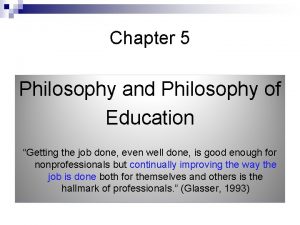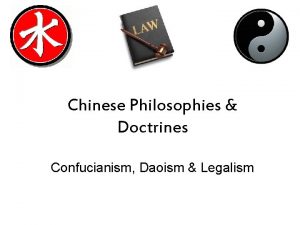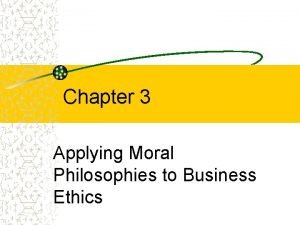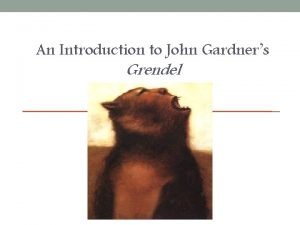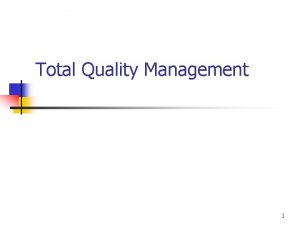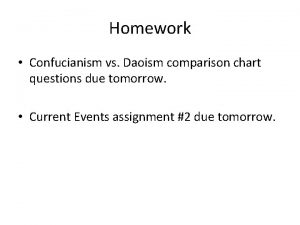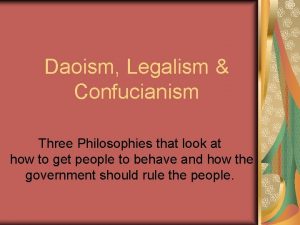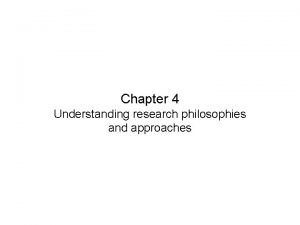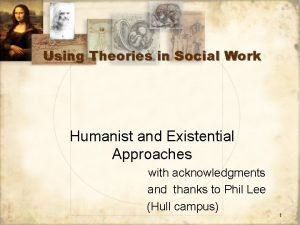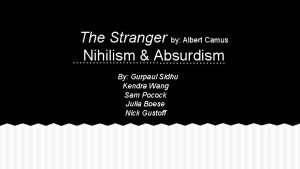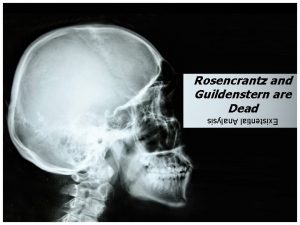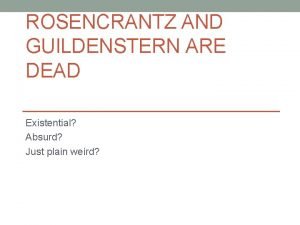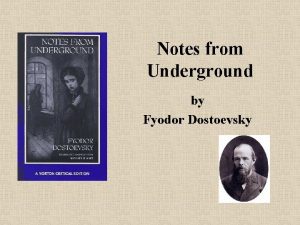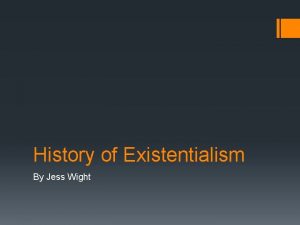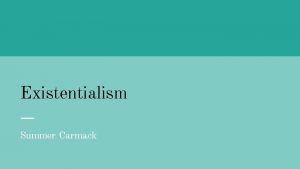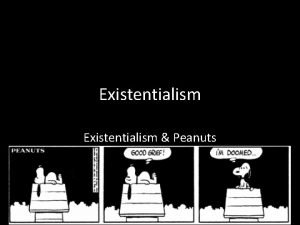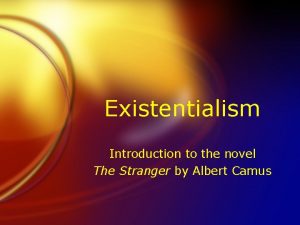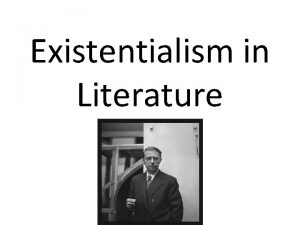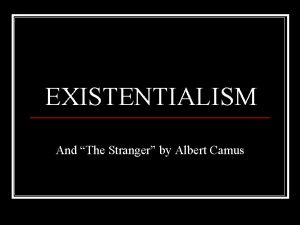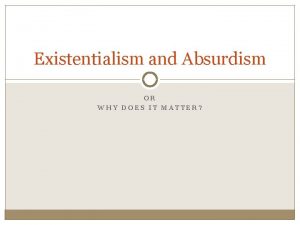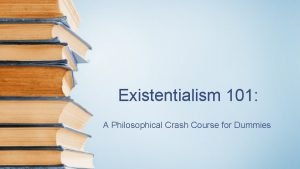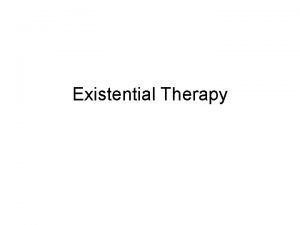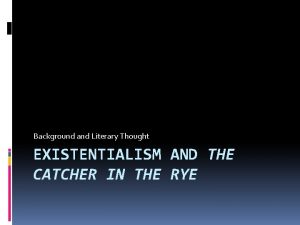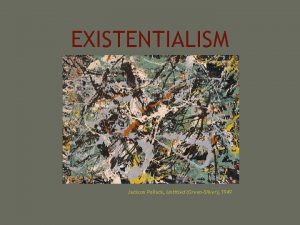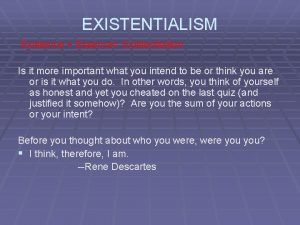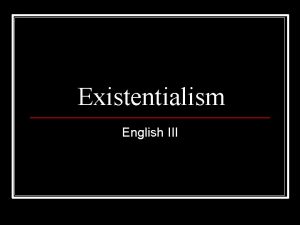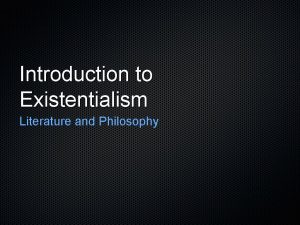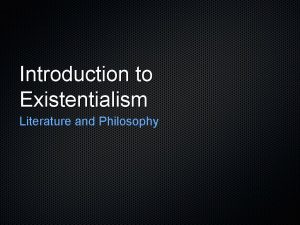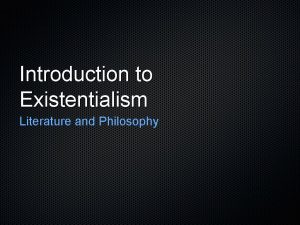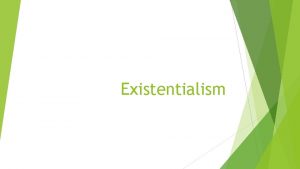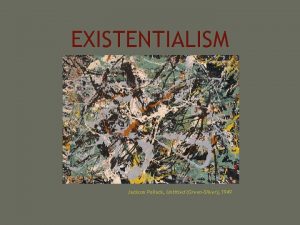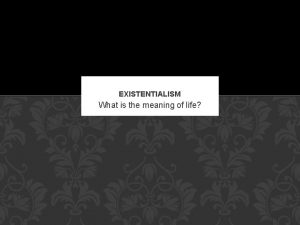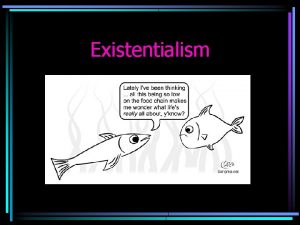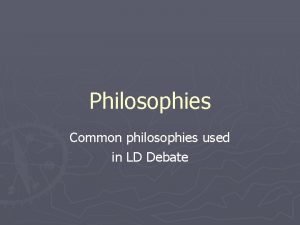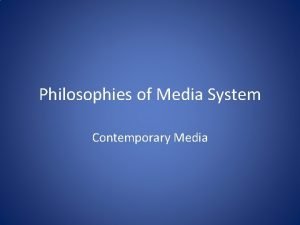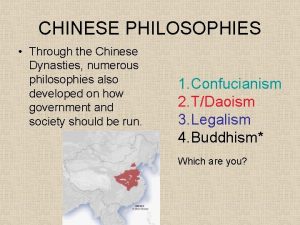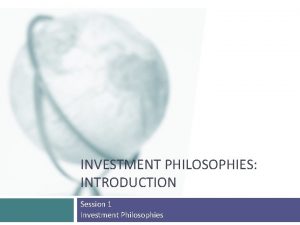03312016 Thoroughly explain the two philosophies separately Existentialism















































- Slides: 47


03/31/2016 Thoroughly explain the two philosophies (separately) Existentialism and Naturalism.

Read the Following • FOLLOW your heart. Create PEACE. Fall in LOVE. Show GRATITUDE. ENJOY the little things. Dream BIG. Believe in MIRACLES. Discover your PASSION. Be SPONTANEOUS. Embrace every POSSIBLITY. BELIEVE in yourself your life is NOW.

The Rhythm of Poetry: Syllable - Poetic feet - Meter

Vowel Loudness Length Clarity Pitch Stressed Syllables: loud High Unstressd quiet syllables: long full short reduced low So, when you say a word more than one syllable, remember to make the stressed syllable louder, longer, clearer, and higher pitched.

Syllables • English words have clear syllables. • We can usually divide words into syllables easily. • We can also determine which syllables to emphasize, or “stress” in each word. § For example: • Angel = AN-gel (not an-GEL) • Complete = com-PLETE (not COM-plete)

More Syllables • poem = PO-em……. (1 stressed + 1 unstressed) • poetry = PO-e-try……. (1 stressed + 2 unstressed) • relief = re-LIEF……. (1 unstressed + 1 stressed) • recommend = re-com-MEND……. (2 unstressed + 1 stressed) • discomfort = dis-COM-fort… (1 unstressed + 1 unstressed) • entertainment = en-ter-TAIN-ment (2 unstressed + 1 unstressed)

Word Stress Rules There are two very simple rules about word stress: 1. One word has only one stress. (One word cannot have two stresses. If you hear two stresses, you hear two words. Two stresses cannot be one word. 2. We can only stress vowels, not consonants. • Here are some more, rather complicated, rules that can help you understand where to put the stress. But do not rely on them too much, because there are many exceptions. It is better to try to "feel" the music of the language and to add the stress naturally.

Using Parts of Speech to predict stress WORKS 80% OF THE TIME 1. Nouns are usually stressed 2. Action verbs are usually stressed. 3. Less "important" words such as linking verbs ("do" in "how do you determine", "was", "is"), conjunctions ("and", "or", "but"), prepositions ("on", "by") are usually not stressed. 4. Pronouns may or may not be depending on context. Usually you can argue either way.

For 2 syllable words: • That are NOUNS and ADJECTIVES, stress is on the first syllable: Dessert------ DES sert Suspect ----- SUS pect Happy------ HAP py

For two syllable words continued… • 2 syllable words that are VERBS, stress on on the second syllable. Record----- re CORD Conduct------- con DUCT

Compound words… rule example For compound nouns, the stress is on the first part BLACKbird, GREENhouse For compound adjectives, bad-TEMpered, oldthe stress is on the FASHioned second part For compound verbs, the under. STAND, over. FLOW stress is on the second part

rule example Words ending in -ic GRAPHic, geo. GRAPHic, geo. LOGic Words ending in -sion and -tion tele. VIsion, reve. LAtion rule example Words ending in -cy, -ty, phy and-gy de. MOcracy, dependa. BIlity, pho. TOgraphy, ge. OLogy Words ending in -al CRItical, geo. LOGical

However, these rules do not always work, remember that… • **Meter is usually consistent! (although it might have some minor variations

More Syllables • wasting = WAST-ing……. (1 stressed + 1 unstressed) • hopefully = HOPE-ful-ly……. (1 stressed + 2 unstressed) • believe= be-LIEVE……. (1 unstressed + 1 stressed) • guarantee = guar-an-TEE……. (2 unstressed + 1 stressed) • condemned = con-DEMN-ed… (1 unstressed + 1 unstressed) • misbehaving= mis-be-HAV-ing (2 unstressed + 1 unstressed)

Scansion • (1) the act of scanning, or analyzing poetry in terms of its rhythmic components • (2) the graphic representation, indicated by marked accents, feet, etc. , of the rhythm of a line or lines of verse – You may have seen scansion marks like the following: The curved lines are “unstressed” syllables while the straight slashes are “stressed”

Poetic Meter • Meters are the rhythms within poems. • Meters are the arrangement of stressed/unstressed syllables to occur stressed at apparently equal intervals.

• Metered verse has prescribed rules as to the number and placement of syllables used per line.

Poetic Foot • A poetic foot is a repeated sequence of rhythm comprised of two or more stressed and/or unstressed syllables. • Poetic meter is comprised of poetic feet

Five main patterns to poetic feet: 1. Iambic 2. Trochaic 3. Anapestic 4. Dactylic 5. Spondaic

Iambic pattern • 1 unstressed syllable followed by 1 stressed syllable • EXAMPLES: – repose (re-POSE) POSE – belief (be-LIEF) LIEF – complete (com-PLETE) PLETE

Iambic Pattern • U / • Unstressed syllable followed by a stressed syllable. This pattern is repeated throughout lines of poetry.

Iambic Pattern • U / • Unstressed syllable followed by a stressed syllable. This pattern is repeated throughout the line of poetry. • Example: – The curfew tolls the knell of parting day

Iambic Pattern • That thou her maid are far more fair than she: • Be not her maid, since she is envious • Shakespeare, Romeo and Juliet

Trochaic Pattern • 1 stressed syllable followed by 1 unstressed syllable • EXAMPLES: – garland (GAR-land) – speaking (SPEAK-ing) – value (VAL-ue)

Trochaic Pattern • / U / U • 1 stressed syllable followed by 1 unstressed syllable • • • EXAMPLE: Why so pale and wan, fond Lover? Prethee why so pale? Will, when looking well can’t move her Looking ill prevail?

Anapestic pattern • U U / • 2 unstressed syllables followed by 1 stressed syllable • EXAMPLES: – on the road – interrupt (in-ter-RUPT) RUPT – unabridged, contra dict, engin eer, masque rade, bridged dict eer rade Galilee

Anapestic pattern • U U / • • ‘Tis the voice of the sluggard, I heard him complain, You have waked me too soon, I must slumber again. As a door on its hinges, so he on his bed, Turns his side and his shoulders and his heavy head. YOU TRY IT

Anapestic pattern • U U / • • ‘Tis the voice of the sluggard, I heard him complain, You have waked me too soon, I must slumber again. As a door on its hinges, so he on his bed, Turns his side and his shoulders and his heavy head.

Dactylic pattern • / U U • 1 stressed syllable followed by 2 1 stressed syllable unstressed syllables • EXAMPLE: – happiness (HAP-pi-ness) – galloping (GAL-lop-ing) – fortunate, Saturday, daffodil, murmuring, for Sat daf mur rhapsody rhap

Dactylic pattern • / U U • EXAMPLE: (Alfred, Lord Tennyson) • • Half a league, Half a league onward All in the valley of Death Rode the six hundred. “Forward, the Light Brigade! Charge for the guns!” he said: Into the valley of Death Rode the six hundred.

Spondaic Pattern • • • / / / All syllables have equal stress EXAMPLE: – Heartbreak – “Out, out…” – "pen-knife, " "ad hoc, " "heartburn"

The Iambic foot • The iamb = (1 unstressed syllable + 1 stressed syllable) is the most common poetic foot in English verse. • iambic foot examples: – behold – destroy – the sun (articles such as “the” would be considered unstressed syllables) – and watch (conjunctions such as and would be considered unstressed syllables)

Lines containing iambic feet • Behold / and watch / the sun / destroy / and grow (5 iambs) • When I / do COUNT / the CLOCK / that TELLS / the TIME [Shakespeare’s Sonnet 12] (5 iambs) • Shall I / compare /thee to / a sum / mer's day? [Shakespeare’s Sonnet 12] (5 iambs) • Come live/ with me/ and be/ my love (4 iambs) (poem by Christopher Marlowe)

Trochaic poem: a stressed syllable followed Trochaic poem: by an unstressed one Henry Wadsworth Longfellow's “The Song of Hiawatha” By the / shores of / Gitche / Gumee, By the / shining / Big-Sea /-Water, Stood the / wigwam / of No / komis, Daughter / of the / Moon, No / komis. Dark behind it rose the forest, Rose the black and gloomy pine-trees, Rose the firs with cones upon them; Bright before' it beat the water, Beat the clear and sunny water, Beat the shining Big-Sea-Water.

Anapestic poetry: 2 unstressed syllables + 1 stressed one Limericks contain anapestic meter (in blue) A Limerick by Edward Lear: There was / an Old Man / with a beard, Who said, "It is just / as I feared! Two Owls / and a Hen, Four Larks / and a Wren, Have all / built their nests / in my beard!"

Dactylic poem: 1 stressed + 2 unstressed Charge of the Light Brigade by Alfred, Lord Tennyson Half a league, / half a league, Half a league / onward, All in the / valley of / Death Rode the / six hundred. "Forward, the / Light Brigade! Charge for the / guns!" he said: Into the / valley of / Death Rode the / six hundred.

Spondaic Poem: 2 equal syllables • Because of this nature of the spondee, a serious poem cannot be solely spondaic • It would be almost impossible to construct a poem entirely of stressed syllables • Therefore, the spondee usually occurs within a poem having another dominant within a poem rhythm scheme.

Combinations of Poetic Feet • • • One foot per line: monometer One Two feet per line : dimeter Two Three feet per line : trimeter Three Four feet per line : tetrameter Four Five feet per line : pentameter Five Six feet per line : hexameter

Type + Number = Meter • • • Types of Poetic Feet Iambic (1 unstressed + 1 stressed) Trochaic (1 stressed + 1 unstressed) Anapestic Dactylic (1 stressed + 2 unstressed) Spondaic (all syllables equal) (2 unstressed + 1 stressed) Number of feet per line • • • Monometer Dimeter Trimeter Tetrameter Pentameter Hexameter

Meters & Feet • Q: If a poem had 1 foot per line, line and the foot was iambic (1 unstressed + 1 stressed), what type of poem would it be? • A: Iambic monometer

Meters & Feet • Q: If a poem had 2 feet per line, line and the foot was iambic (1 unstressed + 1 stressed), what type of poem would it be? • A: Iambic dimeter

Meters & Feet • Q: If a poem had 3 feet per line, and the 3 feet per line foot was iambic (1 unstressed + 1 stressed), what type of poem would it be? • A: Iambic trimeter

Meters & Feet • Q: If a poem had 4 feet per line, and the 4 feet per line foot was iambic (1 unstressed + 1 stressed), what type of poem would it be? • A: Iambic tetrameter

Meters & Feet • Q: If a poem had 5 feet per line, line and the foot was iambic (1 unstressed + 1 stressed), what type of poem would it be? • A: Iambic pentameter

Meters & Feet • Q: If a poem had 3 feet per line, line and the foot was trochaic (1 stressed +1 unstressed), what type of poem would it be? • A: Trochaic tetrameter

Go ahead… experiment with different metric styles in your own poetry! End of presentation.
 Sandra cisneros lived with eight other family members
Sandra cisneros lived with eight other family members To cut food into small, uneven pieces.
To cut food into small, uneven pieces. Thoroughly understand
Thoroughly understand Dc motor efficiency formula
Dc motor efficiency formula Non separately derived system grounding diagram
Non separately derived system grounding diagram Non separately derived system grounding diagram
Non separately derived system grounding diagram Characteristics of cyclical menu
Characteristics of cyclical menu Separately disclosable items
Separately disclosable items Curcatin
Curcatin Tourism: principles, practices, philosophies
Tourism: principles, practices, philosophies Philosophies of total quality management
Philosophies of total quality management Comparing economic philosophies worksheet answers
Comparing economic philosophies worksheet answers State 4 philosophies of extension education
State 4 philosophies of extension education Www.damodaran
Www.damodaran Aswath damodaran investment philosophies
Aswath damodaran investment philosophies Marketing's role
Marketing's role Art theories
Art theories Lessons we can learn from ants
Lessons we can learn from ants Moral philosophy refers to
Moral philosophy refers to Progressivism in education
Progressivism in education Chinese philosophies comparison chart
Chinese philosophies comparison chart Applying moral philosophies to business ethics
Applying moral philosophies to business ethics 5 educational philosophies
5 educational philosophies Grendel chapter 7
Grendel chapter 7 What is tqm? *
What is tqm? * Confucianism legalism and daoism chart
Confucianism legalism and daoism chart Legalism teachings
Legalism teachings Research philosophies and approaches
Research philosophies and approaches Four marketing management philosophies
Four marketing management philosophies Person-centred approach
Person-centred approach Absurdism vs nihilism
Absurdism vs nihilism Rosencrantz and guildenstern are dead existentialism
Rosencrantz and guildenstern are dead existentialism Existentialism in rosencrantz and guildenstern are dead
Existentialism in rosencrantz and guildenstern are dead Existentialism in notes from underground
Existentialism in notes from underground Imagist
Imagist Father of existentialism
Father of existentialism Nietzsche existentialism
Nietzsche existentialism Metamorphosis existentialism
Metamorphosis existentialism Charlie brown existentialism
Charlie brown existentialism Existentialism in the stranger
Existentialism in the stranger Existentialism literary definition
Existentialism literary definition Existentialism examples
Existentialism examples The outsider existentialism
The outsider existentialism Nihilism vs existentialism
Nihilism vs existentialism Crash course philosophy existentialism
Crash course philosophy existentialism Existential therapy activities
Existential therapy activities Catcher in the rye existentialism
Catcher in the rye existentialism Existentialism vs romanticism
Existentialism vs romanticism
